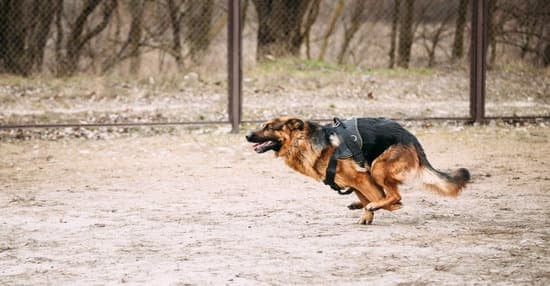Having a dog run away can be a stressful and heart-wrenching experience for any pet owner. Understanding the reasons behind this behavior is crucial in preventing it from happening. In this article on how to train your dog not to run away, we will delve into the various factors that may cause dogs to bolt, as well as provide effective training techniques to keep them safe and secure.
One of the key aspects in addressing runaway behavior is establishing a strong bond with your furry companion. Building trust and a positive relationship with your dog can greatly reduce the likelihood of them trying to escape. Through consistent training and positive reinforcement, you can ensure that your dog feels secure and connected to you, making them less likely to wander off.
Basic obedience training, particularly focusing on recall commands, is essential in teaching your dog to come back to you when called. By using positive reinforcement techniques such as treats and praise, you can encourage good behavior and create a strong foundation for preventing runaway incidents. Additionally, regular exercise and mental stimulation play a vital role in keeping your dog mentally and physically satisfied, reducing the inclination to escape in search of stimulation.
The Importance of Establishing a Strong Bond With Your Dog
Building Trust and Communication
Establishing a strong bond with your dog is crucial in preventing them from running away. Building trust and open communication with your furry companion is key to ensuring that they feel safe and secure in their environment. Dogs who feel connected to their owners are less likely to exhibit escape behavior as they understand that their needs will be met and that they are valued members of the family.
Consistent Training and Positive Reinforcement
Consistency in training plays a significant role in strengthening the bond between you and your dog. By consistently enforcing rules and commands, you are showing your pet that you are dependable and reliable. Positive reinforcement techniques, such as rewards for good behavior, can also be instrumental in reinforcing the bond between you and your dog. This positive interaction creates a sense of security for your pet, reducing the likelihood of them running away.
Spending Quality Time Together
One of the best ways to establish a strong bond with your dog is by spending quality time together. Engage in activities that both you and your furry friend enjoy, such as going for walks, playing games, or simply cuddling on the couch.
This quality time not only strengthens your connection but also helps prevent boredom, which can lead to escape behavior. By being present in your dog’s life and meeting their physical and emotional needs, you can effectively train them not to run away.
Basic Obedience Training for Recall
When it comes to preventing your dog from running away, one of the most important aspects is basic obedience training for recall. This means teaching your dog to come back to you when called, especially in potentially risky situations. Here are some key tips on how to train your dog not to run away through basic obedience training:
- Start with short distances: Begin training in a quiet and familiar environment, calling your dog from a short distance. Use treats or toys as rewards to reinforce positive behavior.
- Practice regularly: Consistency is key when training your dog for recall. Practice multiple times throughout the day in different locations to generalize the behavior.
- Use a consistent cue: Choose a specific word or sound as a recall command and always use the same one. This will help your dog associate that cue with coming back to you.
Remember, patience and positivity are essential during training sessions. Avoid punishment or harsh corrections, as this can create fear or reluctance in your dog. With time and practice, your furry friend will learn to come back promptly when called.
- Avoid distractions: When starting obedience training for recall, make sure to eliminate any distractions that may hinder your dog’s focus. Gradually introduce distractions as your dog becomes more proficient at coming back to you.
- Gradually increase distance: Once your dog reliably comes back to you from short distances, gradually increase the distance between you and your pet during training sessions. This will help strengthen their recall abilities over longer distances.
- Reinforce positive behavior: Praise and reward your dog every time they come back when called, even if they took longer than expected. Positive reinforcement will motivate them to repeat the desired behavior in the future.
By following these tips and staying consistent with training, you can effectively teach your dog not to run away by mastering basic obedience commands for recall.
Using Positive Reinforcement Techniques to Prevent Escape Behavior
One of the most effective ways to prevent your dog from running away is by utilizing positive reinforcement techniques during training. Positive reinforcement involves rewarding your dog for good behavior, making them more likely to repeat it in the future. This method not only helps in shaping desired behaviors but also strengthens the bond between you and your furry companion.
When employing positive reinforcement to train your dog not to run away, it is crucial to reward them for staying close to you or coming when called. Use treats, toys, or verbal praise as rewards for obedience and attentiveness. By consistently providing positive feedback when your dog exhibits the desired behavior, they will learn that staying by your side brings good things their way.
In addition to using treats and praise, incorporating playtime and affection as part of the positive reinforcement process can further reinforce the message that staying with you is rewarding. Engaging in interactive games or spending quality time together can help build a strong emotional connection with your dog, making it less likely for them to run away in search of stimulation or companionship elsewhere.
Remember that patience and consistency are key when using positive reinforcement techniques in training your dog not to run away.
The Significance of Exercise and Mental Stimulation in Preventing Runaway Behavior
One crucial aspect of preventing dogs from running away is to ensure they receive an adequate amount of exercise and mental stimulation. Dogs, especially high-energy breeds, require regular physical activity to keep them happy and engaged.
Without proper exercise, they may become restless and seek opportunities to escape in search of stimulation. Engaging in activities such as daily walks, play sessions, and interactive games can help satisfy their need for movement and prevent them from running away out of boredom.
In addition to physical exercise, mental stimulation is equally essential in maintaining a well-balanced and contented dog. Providing your furry companion with puzzle toys, training sessions, or other mentally stimulating activities can help keep their minds sharp and occupied. A mentally stimulated dog is less likely to exhibit undesirable behaviors such as running away as they are too preoccupied with engaging activities that challenge their cognitive abilities.
It’s also essential to note that every dog has different exercise requirements based on factors such as age, breed, and health condition. Tailoring your dog’s exercise routine to meet their individual needs can further prevent the urge to run away.
By incorporating both physical activity and mental stimulation into your daily routine with your dog, you can strengthen your bond while significantly reducing the chances of them trying to escape. Remember that a tired and satisfied dog is a happy dog that is less likely to run away in search of excitement or fulfillment.
| Exercise & Mental Stimulation Tips | Benefits |
|---|---|
| Provide daily walks, play sessions, and interactive games | Prevents restlessness and boredom |
| Use puzzle toys and engage in training sessions | Keeps the mind sharp and occupied |
| Tailor exercise routine based on age, breed, and health condition | Meets individual needs preventing runaway behavior |
Creating a Safe and Secure Environment for Your Dog
When it comes to preventing your dog from running away, creating a safe and secure environment is crucial. Here are some tips on how you can ensure the safety of your furry friend:
- Secure your yard: Make sure that your yard is properly fenced to prevent your dog from escaping. Check for any holes or gaps in the fence where your dog could potentially squeeze through or dig under. Consider installing a fence that is tall enough to prevent jumping over.
- Provide proper identification: In case your dog does manage to escape, make sure they have proper identification such as a collar with ID tags and a microchip. This will help ensure that they can be easily identified and returned to you if found by someone else.
- Limit unsupervised outdoor time: It’s important to supervise your dog when they are outdoors to prevent them from running away. If you need to leave them outside unsupervised, consider using a tie-out or a securely enclosed kennel.
In addition, it’s essential to create a comfortable and safe indoor environment for your dog when you’re not around. Here are some tips on how you can achieve this:
- Provide a cozy bed or crate for your dog to retreat to when they need some alone time.
- Remove any hazardous objects or substances that could harm your pet if ingested.
- Keep doors and windows securely closed and consider using child locks or pet gates to prevent your dog from accidentally escaping.
By taking these steps, you can help create a safe and secure environment for your dog, reducing the likelihood of them running away. Remember, prevention is key when it comes to keeping your beloved pet safe and sound.
Implementing Boundary Training Techniques
Consistency is key when implementing boundary training techniques. Make sure to always praise and reward your dog when they stay within the designated area and gently redirect them back if they start to stray beyond the boundaries. Patience is essential during this process, as it may take time for your dog to fully grasp the concept of staying within their limits.
In addition to physical boundaries, you can also use verbal cues and commands to reinforce the idea of staying within a certain area. Training your dog to respond to commands like “stay” or “come back” can be extremely helpful in preventing them from running away. Remember to always keep training sessions positive and rewarding for your pet, as this will encourage them to follow your instructions willingly.
| Boundary Training Techniques | Importance |
|---|---|
| Use physical markers like flags or ropes | Provides visual cue for dogs |
| Consistency in enforcing boundaries | Praise and reward for staying within limits |
Dealing With Separation Anxiety and Fear-Based Runaway Behavior
Separation anxiety and fear-based runaway behavior are common issues that can lead to dogs running away. Dogs experiencing separation anxiety may become anxious and distressed when left alone, causing them to try to escape in search of their owners.
Fear-based runaway behavior, on the other hand, may be triggered by loud noises, unfamiliar environments, or traumatic past experiences. To address these behaviors effectively, it is important to understand the root cause and work towards building trust and confidence in your dog.
One way to combat separation anxiety is to gradually acclimate your dog to being alone through desensitization training. This involves leaving your dog for short periods of time and gradually increasing the duration as they become more comfortable. Providing distractions such as toys or interactive feeders can also help keep your dog occupied while you are away. Additionally, creating a safe space for your dog with comfortable bedding and familiar scents can help reduce anxiety levels.
In cases of fear-based runaway behavior, it is essential to identify triggers and work on desensitizing your dog to those stimuli. Using counterconditioning techniques, such as pairing the trigger with positive experiences like treats or playtime, can help change your dog’s emotional response.
It is crucial to remain patient and consistent in training efforts while offering reassurance and support to help your dog overcome their fears. By addressing separation anxiety and fear-based runaway behavior with compassion and understanding, you can build a stronger bond with your furry companion while keeping them safe at home.
Factors to Consider When Using Technology to Prevent Dogs From Running Away
In conclusion, preventing your dog from running away involves a combination of understanding the root causes behind their behavior, establishing a strong bond, and implementing proper training techniques. By addressing these factors, pet owners can effectively reduce the chances of their furry companions escaping.
One crucial aspect of training your dog not to run away is utilizing positive reinforcement techniques during basic obedience training. Teaching them to respond reliably to recall commands can help prevent potential escape situations. Building a solid foundation of obedience can strengthen the bond between you and your dog, making them less likely to stray.
Additionally, providing adequate exercise and mental stimulation for your dog is essential in curbing runaway behavior. Creating a safe environment with secure boundaries and utilizing technology like GPS trackers can also offer added security measures. By taking a proactive approach and considering all these factors, pet owners can significantly reduce the risk of their dogs running away while ensuring their safety and well-being.
Frequently Asked Questions
How Do I Stop My Dog From Running Away When Called?
Training your dog to not run away when called requires consistent and positive reinforcement. Start with basic commands like “come” and use treats as rewards. Gradually increase distractions and practice in different environments.
How Do I Train My Dog Not to Leave the Yard?
Teaching your dog boundaries and reinforcing them is key to preventing them from leaving the yard. Use positive reinforcement techniques whenever they stay within the yard, and consider using physical barriers like fences for added safety.
Do Dogs Ever Stop Running Away?
While some dogs may eventually stop running away with proper training, it ultimately depends on the individual dog’s behavior, breed, past experiences, and environment. Consistent training and supervision are essential in preventing dogs from wandering off indefinitely.

Welcome to the blog! I am a professional dog trainer and have been working with dogs for many years. In this blog, I will be discussing various topics related to dog training, including tips, tricks, and advice. I hope you find this information helpful and informative. Thanks for reading!





